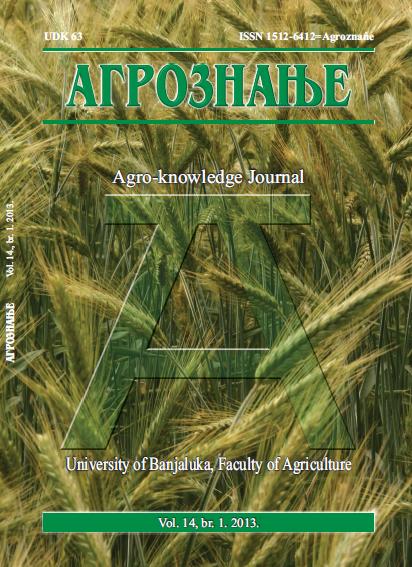Energy and Nutritional Value of Raw Grains of Domestic Bean Varieties
DOI:
https://doi.org/10.7251/AGREN1301051HAbstract
Beans are food with high nutritional value. In the history of human diet beans are found in use very early, and availability throughout the year enables its wide application. In Bosnia and Herzegovina beans are common ingredients which are an integral part of a meal, especially during the winter. The aim of this paper is to give contribution to the selection of local varieties of beans by highlighting energy and nutritional value of raw grains. The tests in this study included three local varieties of beans, namely Bosna, Darko and Igman in order to assess the levels of carbohydrate, protein and fat (energy content) and the content of minerals (copper, iron, phosphorus, manganese and magnesium). Test results indicate that content of dry matter and water is not conditioned by varietal differences, but the total fat content varies from 0.84% (Bosna) to 1.73% (Darko), and total sugar of 2.4% (Bosna) to 3.36% (Darko and Igman). Protein content compared to the dry matter ranged from 21.18% (Darko) to 25.28% in Bosna. Starch content ranged from 65.78% (Igman) to 67.04% (Bosna). The tested varieties of beans contained significant amounts of trace elements, thus in 100g raw grains there is: up to 69.7% of magnesium, up to 59.2% of phosphorus, up to 79.8% of manganese, up to 42.2% iron and up to 64,1% copper of the RDA (Recommended Dietary Allowances - the total daily needs).Downloads
Published
2013-11-15
Issue
Section
Articles

